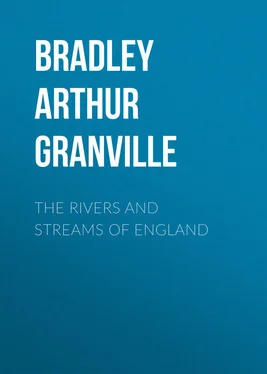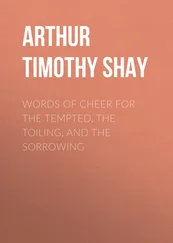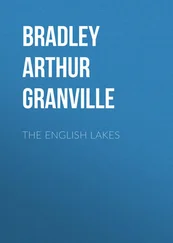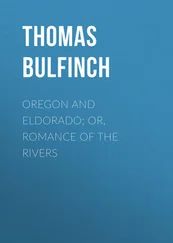Arthur Bradley - The Rivers and Streams of England
Здесь есть возможность читать онлайн «Arthur Bradley - The Rivers and Streams of England» — ознакомительный отрывок электронной книги совершенно бесплатно, а после прочтения отрывка купить полную версию. В некоторых случаях можно слушать аудио, скачать через торрент в формате fb2 и присутствует краткое содержание. Жанр: foreign_language, foreign_antique, foreign_prose, Путешествия и география, на английском языке. Описание произведения, (предисловие) а так же отзывы посетителей доступны на портале библиотеки ЛибКат.
- Название:The Rivers and Streams of England
- Автор:
- Жанр:
- Год:неизвестен
- ISBN:нет данных
- Рейтинг книги:3 / 5. Голосов: 1
-
Избранное:Добавить в избранное
- Отзывы:
-
Ваша оценка:
- 60
- 1
- 2
- 3
- 4
- 5
The Rivers and Streams of England: краткое содержание, описание и аннотация
Предлагаем к чтению аннотацию, описание, краткое содержание или предисловие (зависит от того, что написал сам автор книги «The Rivers and Streams of England»). Если вы не нашли необходимую информацию о книге — напишите в комментариях, мы постараемся отыскать её.
The Rivers and Streams of England — читать онлайн ознакомительный отрывок
Ниже представлен текст книги, разбитый по страницам. Система сохранения места последней прочитанной страницы, позволяет с удобством читать онлайн бесплатно книгу «The Rivers and Streams of England», без необходимости каждый раз заново искать на чём Вы остановились. Поставьте закладку, и сможете в любой момент перейти на страницу, на которой закончили чтение.
Интервал:
Закладка:
Once a day, perhaps, in summer a small steamer from Worcester or Tewkesbury carries a load of holiday-makers between those places or up to Bewdley, while occasionally a long line of tarpaulin-covered barges, drawn by a tug, lashes the brown sombre river into great commotion. Save for these rare interruptions, however, Sabrina in her pilgrimage through Worcestershire is a lonely stream; at close quarters even a thought sombre and moody, swishing noiselessly between those high grass embankments and half-submerged willows, over the top of which she gets up so readily when the fountains of the Welsh hills are loosed. Seats of old renown lie here and there upon the ridges to the right and left. Hartlebury Palace is near by, where the Bishops of Worcester are still seated in the Jacobean halls of their gorgeous predecessors, behind moats and ramparts that sheltered much earlier prelates even than these; past the many-hundred-acred wood of Shrawley and past Astley, where are the remains of hermitages cut in the cliff, used in quite recent years for profane purposes, but of old by pious recluses who exchanged benedictions with the Severn boatmen for small coin. Thence to Ombersley, the seat and village of the Sandys, who were foremost among Worcestershire loyalists in the Civil War; and Holt Castle, where the Elizabethan Chancellor, the first of the Bromleys, set up house and founded the present family. Close by, too, are the ancient oaks of Whitley, almost brushing the costly fountains and terraced gardens of the Earls of Dudley, till the uplifted glades of Hallow Park, where Queen Elizabeth stayed with a little retinue of 1500 horses, and shot a buck, makes a fitting approach to Worcester, whose Cathedral stands out conspicuously above the town, which lies sloping upwards from the river-bank.
Plain though stately in exterior and nobly poised, Worcester Cathedral holds the visitor rather by the richness of its interior and the many successive styles of architecture it displays, including the original crypt – almost the best in England – of Bishop Wulfstan, the eleventh-century founder of the present fabric. Little of the latter indeed but this Norman crypt is left, for the church of the great Monastery of Worcester suffered sorely from fire and mischance in the Middle Ages, while during the civil wars, the city being nearly the whole time “in action,” as it were, was more fleeced and knocked about than almost any other in England. The first small battle of the war, fought by Rupert, which struck a long and serious misgiving into the minds of the raw mounted troopers of the Commonwealth, took place at Powick Bridge over the Teme, near the city. The last battle of the second brief war, as every one knows – a fierce and bloody one – was also fought at Worcester. Otherwise it was occupied for a brief time by Essex’s raw army, who worked havoc among the monuments, windows, and ornamentation of the Cathedral. Thenceforward the “ever faithful city” was held for the King, though at the cost of much hardship and constant exactions for his cause, till near the end of the struggle, when it was captured.
Modern Worcester is singularly fortunate in the wide range of its industries, gloves and porcelain still claiming pre-eminence. It still retains, however, among much of that reconstruction inevitable to a busy town, quite a large number of sixteenth and seventeenth century half-timbered houses. That occupied by Charles the Second, at the great battle of Worcester, and from which he escaped by only a hair’s breadth to pursue the adventurous course of a hunted fugitive, is still standing, as also is the yet finer old house which was the headquarters of the Scottish commanders, and in which the Duke of Hamilton died of his wounds. It would be out of place, even if space permitted, to dwell here on the peculiar position which Worcester, and the county of which the Severn valley is so important a part, occupied from the Norman Conquest to the Reformation. It was of all English counties the one where the Church had most property and most power, and the influence of great lay magnates was least. While here too, and above all while treating of the Severn, the fact must be emphasized what an influence the river had on the drift of race and political balance in England. In British, Roman, and probably for most of the Saxon period, the Severn was by no means the well-behaved river, a hundred or so yards broad, flowing between well-defined banks, that we see to-day, but the whole valley through which it now flows was a marshy lagoon. Beyond the valley was a strip of forest wilderness, and beyond the wilderness was Wales and its dubious Borderland. Worcester first came into being as the chief passage of the Severn, since Roman, British, and Saxon roads, and the route of travel for long afterwards, all converged here. As a historical boundary no river in England has played such a part. Even in that more or less authentic compact known as the Tripartite convention, caricatured by Shakespeare, between Owen Glyndwr and the Percies in the early fifteenth century to divide England and Wales into three kingdoms, the Severn was the natural frontier of the western dominion. Its west bank even to-day has a faint Celtic flavour, while nothing to the eastward of the river could possibly suggest anything but the Saxon.
Leaving Worcester for its twenty-mile run to Tewkesbury, the Severn almost immediately receives the Teme, that famous trout and grayling river which from here to its source in the Radnor moors has scarcely a dull mile. Whether brawling in the woody limestone gorges of Downton, gliding under the storied walls of Ludlow, slipping from pool to rapid through the pleasant meads of Herefordshire, or running its Worcestershire course through the deep romantic vale between Tenbury and Powick, the Teme is always beautiful. With this final contribution from the Welsh mountains, the Severn pursues its sombre, smooth, fast-gliding course between the same high banks of red sandstone soil, held together by tufted grass for the better resistance of winter floods, and the low willows which trail and dip in the stream. Occasionally some slope of woodland makes a brief change in its character. But no villas nor country-houses to speak of venture on the river edge, nor vary its somewhat monotonous character of foreground detail with their ornate accessories, such as display themselves in one shape or another on most of our famous rivers. Neither punts nor skiffs nor house-boats, nor flannelled youths nor gay parasols, ever brighten its broad silent stream. But as a natural feature in a typical English landscape of more than common beauty, rolling majestically along between
wide ox-pastures and meadows that in June are busy with haymakers and instinct with pastoral life, it leaves little to be desired. One feature, however, here adds abiding lustre to the Severn valley; for the Malvern Hills, by far the finest range for their modest altitude in all England, rise within easy distance of its western bank, and following in the same direction make a mountain background to a scene that even without them would be fair enough.
While noting contrasts, too, though in this case not anywise concerned with the physical attributes of Thames or Severn, what a curiously different tale is told in the ownership of their respective banks. Along the former, for instance, with its gayer surface, its more ornate and gregarious shores and splendid mansions, how few occupants of these last have any hereditary association with the soil, how utterly broken are most ties with the past! Along the Worcestershire Severn, on the other hand, the ancient stocks hold their ground with singular tenacity. Above Worcester something of this has been indicated; and again, as one follows the river downwards and recalls the names of Lygon (Earl Beauchamp), Hornyold, Berington, Lechmere, Coventry, Temple, or Martin – all but the last two, who are about a century later, representatives by descent of Tudor ancestors – it seems to cover almost every seat of note within hail of the river, and probably the greater portion of the land abutting on its banks to the county’s limit: and this for modern England anywhere is extremely creditable and rare enough.
Читать дальшеИнтервал:
Закладка:
Похожие книги на «The Rivers and Streams of England»
Представляем Вашему вниманию похожие книги на «The Rivers and Streams of England» списком для выбора. Мы отобрали схожую по названию и смыслу литературу в надежде предоставить читателям больше вариантов отыскать новые, интересные, ещё непрочитанные произведения.
Обсуждение, отзывы о книге «The Rivers and Streams of England» и просто собственные мнения читателей. Оставьте ваши комментарии, напишите, что Вы думаете о произведении, его смысле или главных героях. Укажите что конкретно понравилось, а что нет, и почему Вы так считаете.












